Nearly a year after preseason commentary about the Chinese government from the Houston Rockets, the Los Angeles Lakers and the Miami Heat wrapped up the longest and most unusual season in the history of the NBA. There were outbreaks and fastbreaks, slam dunks and long slumps, and timeouts and time off. The NBA Season was historic and special because of all of the weirdness it came with. With the Lakers winning the title, and the season officially coming to a close, it’s time to reflect on lessons from the NBA bubble. This 380-day season saw peaks and valleys unlike any season before it… But what things did the NBA bubble teach us?
Don’t be a doofus
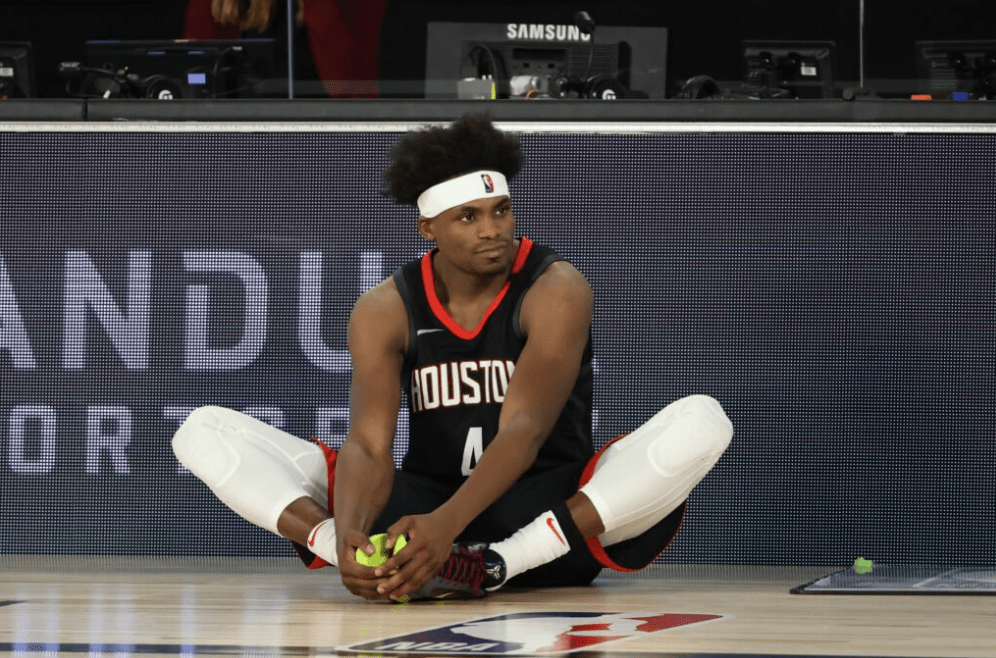
Yes, this means when the NBA writes protocols, you don’t order Postmates and have it delivered to the edge of the bubble. This means you don’t invite a mistress into your hotel room in the bubble. This means you don’t complain about free food, or luxury hotel rooms.
All of this gets you clowned on #NBATwitter.
And rightfully so. The NBA bubble was under a microscope. There were entire Instagram and Twitter accounts dedicated to life in the bubble. While America navigated a Covid world outside of the bubble, the NBA life at Disney came off like a summer camp.
Ok, ok… so it’s not a summer camp. But it was very clear: the NBA had specific rules. Breaking those rules had consequences, and one of those ended up being that you’d get roasted on Twitter. So thing we learned number one: don’t be a doofus.
Shotgunning is an artform, and may be a cultural one?

In perhaps the weirdest social media trend of the early part of the NBA bubble, players began competing in unofficial “shotgunning” competitions.
For those of you catching up at home, “Shotgunning” a beer involves cutting a hole near the bottom of a can of a cheap adult beverage. Then, with your mouth over the whole, you’re supposed to tilt the can upright and open it to quickly chug the entire thing. The simultaneous noise of the can opening and being almost empty sounds similar (in a way this is not actually at all similar but frat bros have convinced us it does sound similar) to the loading of a shotgun.
And for whatever reason, NBA players like JJ Reddick and Meyers Leonard
Sorry meant to post this earlier. Multitasking post practice. @budlight @NBABubbleLife pic.twitter.com/pBsau1SHoQ
— JJ Redick (@jj_redick) July 12, 2020
Miami Heat C Meyers Leonard can shotgun a 12oz beer pretty fast ? pic.twitter.com/FQCfZXGGq6
— Mitchell Moore (@MitchellMoorePM) July 13, 2020
“That’s the Big Hammer!” ??
— ClutchPoints (@ClutchPointsApp) July 17, 2020
Meyers Leonard (@MeyersLeonard) defeats Jordan Clarkson (@JordanClarksons) in shotgun challenge despite slow start.pic.twitter.com/n6NhjOvKAk
For some reason, this didn’t quite take off in the bubble like some might have hoped for. We at Belly Up can’t qwhite figure out why some players really got into the shotgunning challenge, but trust that we are doing a lot of research into the artform to see what the origins are.
Don’t talk noise if you can’t back it up
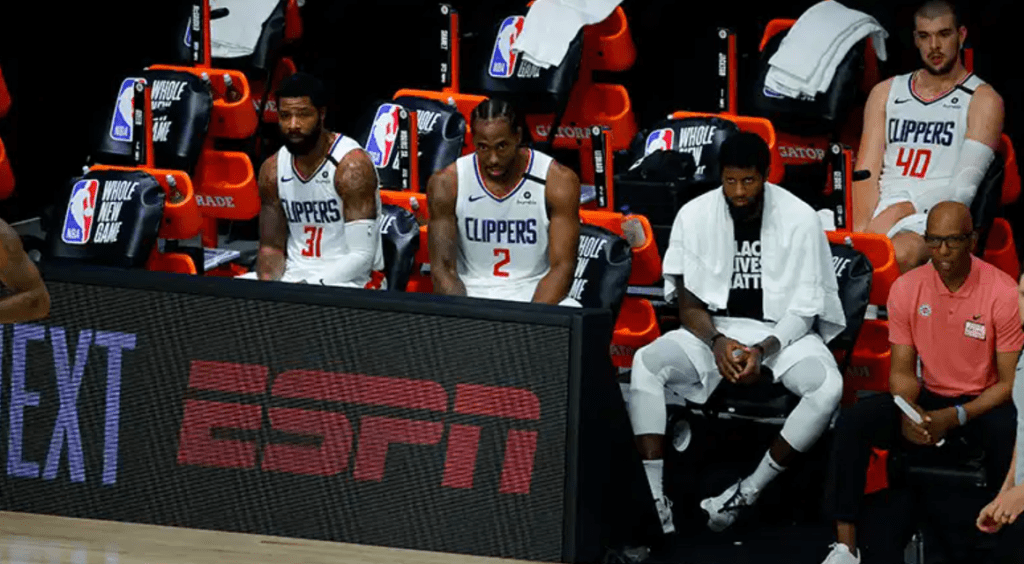
Listen, we’re not going to belabor this much… but the LA Clippers had some loud barks this season. They were a heavy favorite, even as a two seed, to win the NBA title this year. Maybe we shouldn’t have been fooled by them… But it was enticing.
This was most obvious when they began chirping at Damian Lillard about “Dame Time.” Clippers not named Kawhi Leonard enjoyed distracting him throughout their seeding game match up, and took to social media to continue to poke fun at him. Lillard responded, and pointed out he had series ending buzzer beaters over Patrick Beverley (2014) and Paul George (2019). Most wrote it off as regular NBA trash talk.
But Lillard had a greater point: Outside of Kawhi Leonard, who again was not one of the guys poking fun at Lillard, what had any of these Clippers accomplished? The year before they were an eight-seed that was happy to compete with the likes of Kevin Durant. Several of them were The year before? Missed the playoffs. Head Coach Doc Rivers? Now the only NBA head coach to have blown three 3-1 series leads (which was good enough to get him fired).
It’s not the the Clippers didn’t have the talent to meet the expectations set for them. It’s not even that NBA trash talk is some bad thing or something to be avoided. Trash talk is an inherent and fun part of basketball.
But if you’re the Clippers, a franchise with a history of losing games… maybe wait until you have done something to talk about
$20 Coffee works
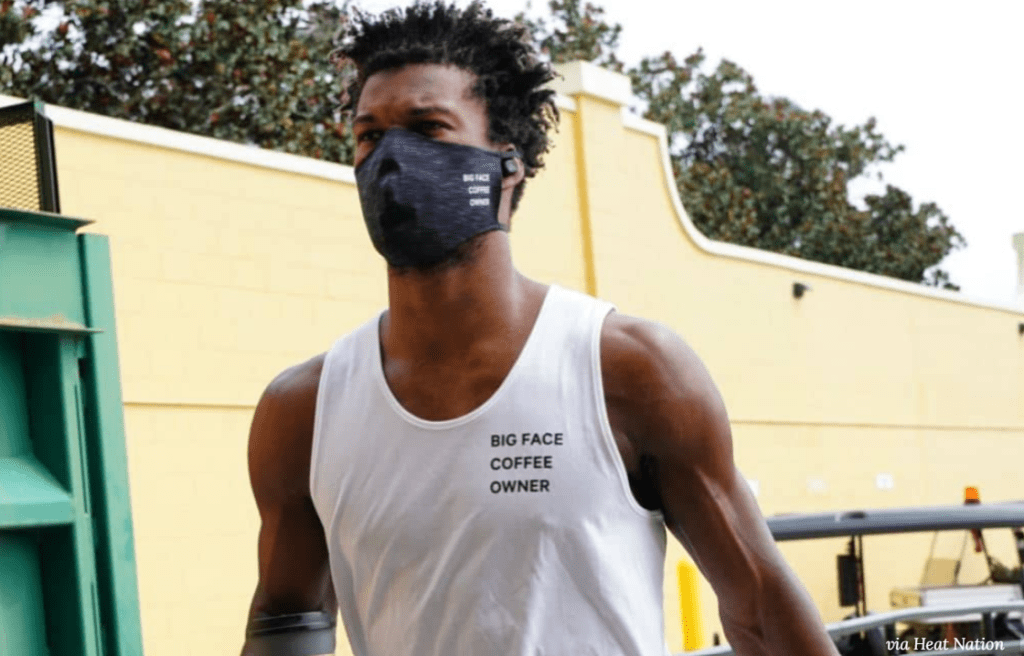
How else could anyone explain the success of Big Face Coffee’s owner Jimmy Butler? Butler famously began selling $20 cups of coffee, regardless of size, out of his hotel room. He’s worn custom LuluLemon clothing covered in “Big Face Coffee Owner” branding in every picture from the bubble that is not him playing basketball.
The appropriate dosage of caffeine has a scientifically proven positive impact on athletic performance. While too much can get an athlete’s heart moving too fast and / or dehydrate them, caffeine can focus and warm up an athlete in a way that helps them play better. And science aside, that makes a lot of logical sense.
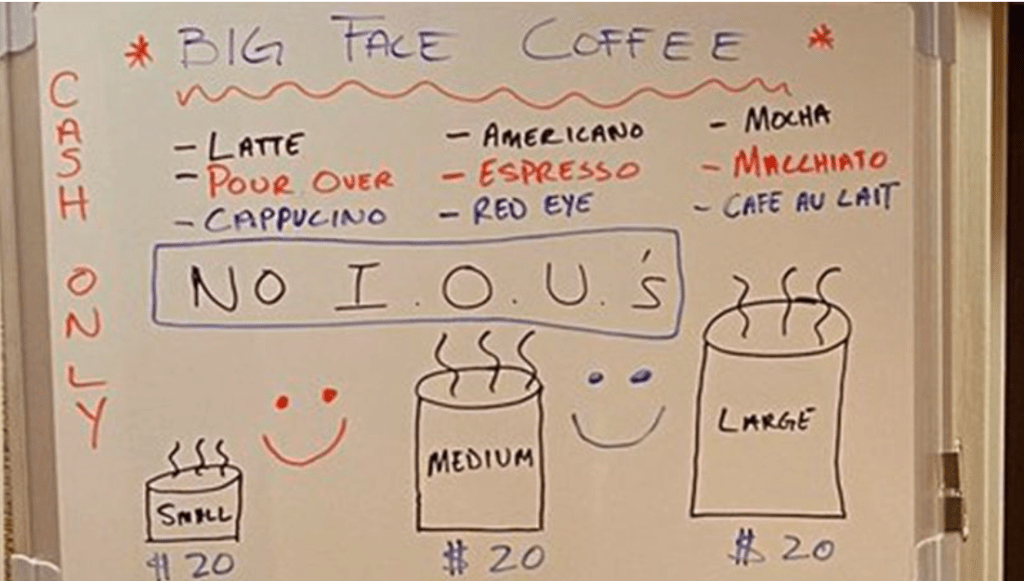
Because how else could anyone explain the growth of Jimmy Butler in the NBA playoffs? Butler has become a madman. He’s putting his name on historic lists with Wilt Chamberlain, Magic Johnson, and LeBron James. He’s getting the first 40-point triple-double since Shaquille O’Neal. And unlike all four of those guys… he’s not a Laker.
Everyone poked fun at South Beach Jimmy. Butler, who left franchises in the lottery in both Chicago and Minnesota, chose to play in Miami over Philadelphia and Houston last year. Everyone was confused. The choice seemed to indicate Jimmy cared more about dominoes, the sunshine, and fruity drinks than winning. Now everyone looks silly, and Jimmy did not miss the comments. He saw the disrespect. And that, plus expensive coffee, clearly fueled the jump he and the Heat made this postseason.
In the NBA Finals, Butler sat just 15 total minutes in the six game series. That’s some noise we can all be here for.
Don’t take LeBron James for granted
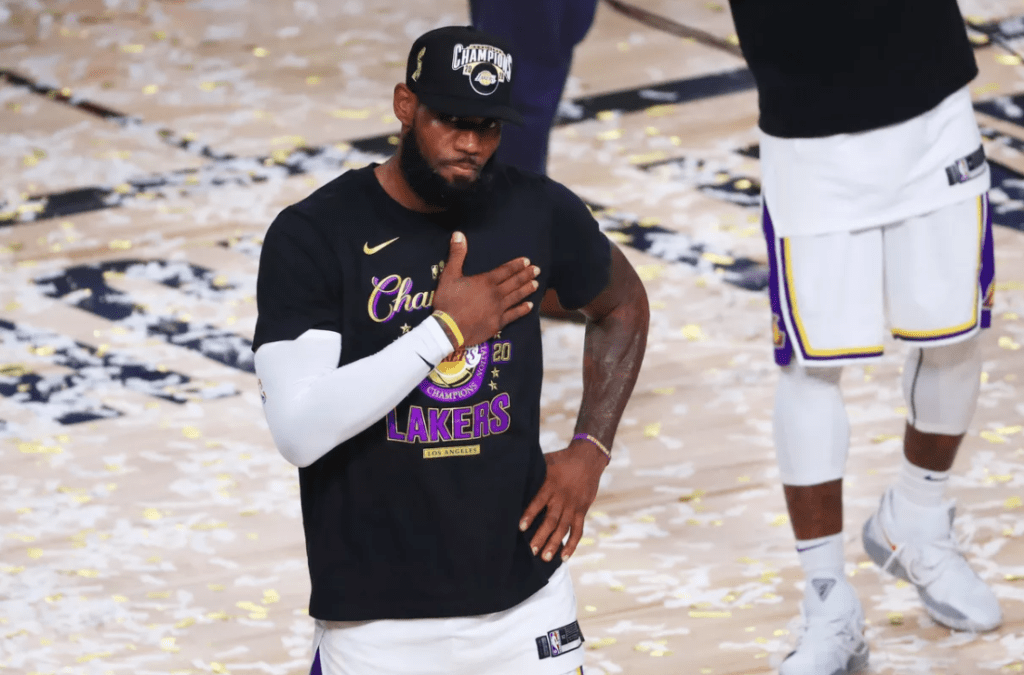
Ok, so this may come off as the most obvious lesson… but it’s a lesson nonetheless. LeBron James finding ways to dominate the game at both ends, in the playoffs, at 35 was something more than special. That he’s done it all while playing a record 260 career playoff games is incredible. That he had the quietest 28 point, 14 rebounds, and 10 assists triple-double, his fifth of the postseason, in a close out game is astounding. That he’s won the Finals MVP trophy with three different franchises is unprecedented.
LeBron James approached the playoffs without his “Zero Dark 23” social media blackout. He didn’t use some special Nike SNKRS “LeBron Watch” to promote his kicks. He didn’t even talk much about himself in the pressers throughout the playoffs. Without the fanfare, LeBron James was as focused as he’s been on a title.
The 2020 NBA championship may be the hardest one ever won. There was no home court advantage, the game schedule was more condensed than it has ever been, and the Orlando bubble schedule broke all rules, rituals, and routines. Amidst all of that, LeBron James won the NBA title in just 21 playoff games. And if you ask him, he feels like it should’ve taken even less time.
There will be a time that Anthony Davis is carrying the load, and their roles are switched, There will be a time when Nike promotes a “LeBron Day” to sell his sneakers and reminisce on old times. There will be a time when that Mickey Mouse shaped bald spot is more obvious, where the beard is even more grey, and when the signature pull back dunk with the right hand is a finger roll. LeBron James has been to 10 NBA Finals in 14 years, but Father Time is undefeated.
But damn, after that playoff run, it feels like that is all long way away. But if history tells us anything, it really isn’t. Time does bring an end to all things. This will include LeBron. Don’t be the fan that looks back scornfully at greatness… Because LeBron is doing things we may never see again.
Sometimes standing up means not standing
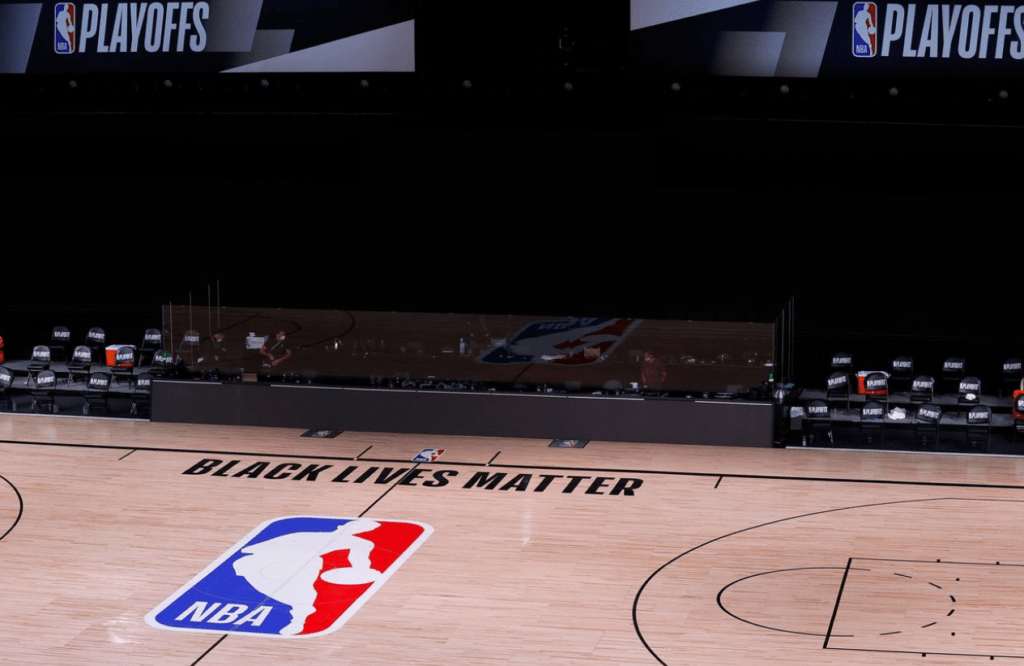
Yes, the entire end to the 2020 season is going to go down as historic. That the league took four months off, was able to create a legitimate bubble atmosphere, keep everyone safe, and play out the rest of the season is incredible. But, that’s not what history will remember from the NBA bubble.
Further, the NBA consciously made the effort to make the restart about a specific cause. Black Lives Matter was printed on the floor, messages put on jerseys to be auctioned off for causes, and players kneeled for the anthem to make their statement on America in 2020. But none of that was the biggest moment.
In late August, during the first round of the NBA playoffs, the Milwaukee Bucks decided to forfeit their game vs. the Orlando Magic by not taking the floor. They chose to draw attention to police brutality – in particular in reference to the shooting of Jacob Blake in Kenosha, Wisconsin – instead of to themselves.
And then the dominoes fell. The Magic agreed to go back to the locker room, making it not a forfeiture but a game that never happened. Russell Westbrook and Chris Paul were spotted conversing outside their locker rooms just before the word came that Houston and Oklahoma City were going to do the same. The Lakers and Portland Trail Blazers agreed to sit the day out as well. Then baseball teams walked off their respective fields, football teams out of practice. The WNBA made a “pregame” statement before not playing a game. The NBA had, in essence, paused the sports landscape and asked everyone to focus on a very different, very serious issue.
Sports and politics have been connected since the days of Babe Ruth. The connections from sport to social justice and society are inherent. But players, across sports, coming together to collectively force a conversation by not playing is the historic moment from this season. It’s not the Jimmy Butler triple-doubles. It’s not the Anthony Davis game-winner. Nor is it the Jamal Murray vs. Donovan Mitchell one on one series in the first round, the Luka Doncic step back, the back to back three to one comebacks… It’s bigger than all of that.
It’s weird seeing your favorite players cry
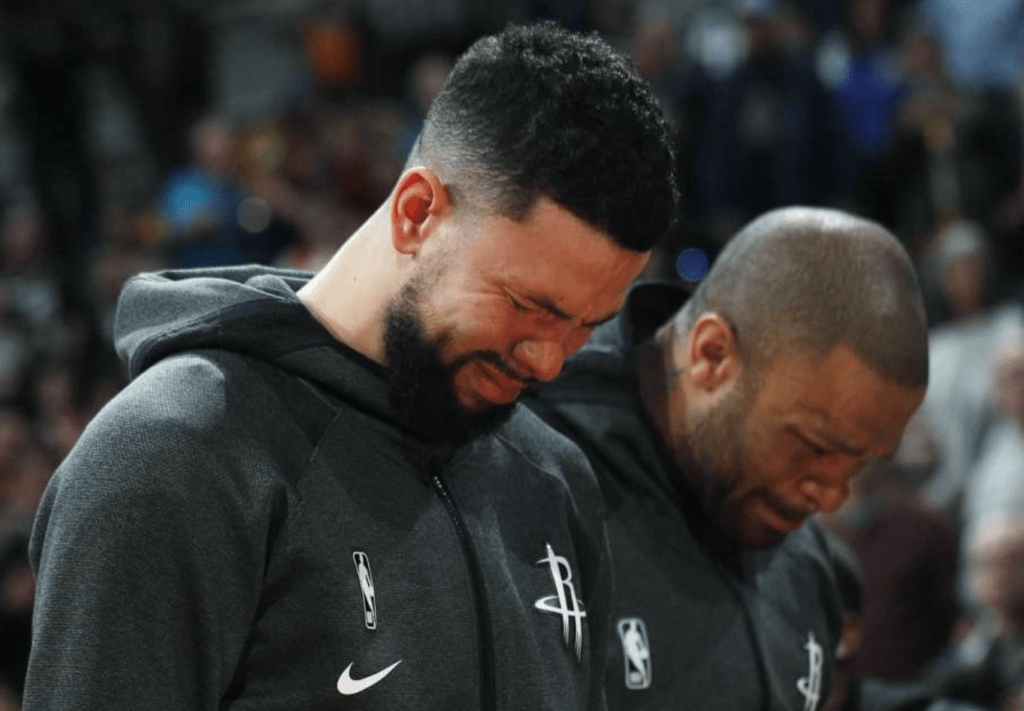
The story of the 2019-2020 NBA season, since January 26th, has been dominated by the influence Kobe “Bean” Bryant had on the game. His tenacity, insane work ethic, and determination serve as trademarks to both numbers retired in purple and gold. Kobe’s accolades make “Hall of Famer” seem like a short sighted title. His legacy is complicated both on and off the floor, but his impact on the NBA is unquestionable. Regardless of your thoughts on him as a man or a player, Kobe’s tragic passing in January struck a chord. He, his daughter, and several teammates died in a helicopter crash that was heard around the world.
But what was interesting was the way it impacted every generation. The average NBA player is 26 years old, meaning they were born shortly before Bryant was drafted. They probably began watching some kind of basketball while Bryant was winning rings with Shaq. They probably began understanding what they were watching when Bryant was winning rings with Pau. And, they probably began realizing their NBA dreams could become a reality around the time Bryant’s NBA career was winding down. Young players practiced his fadeaway in their driveways, watched his gamewinners on YouTube during class, and wore his sneakers as they worked on their own craft.
Kobe Bryant was your favorite player’s favorite player. And in the months since his death, it’s only become more obvious. From the sneakers players wore to the Black Mamba uniforms, Kobe’s presence has been obvious the entire three months of bubble basketball. But the kicks, clothes, and patches are surface level homages. The raw emotion of the players and coaches who worked closest with Kobe is what really drove home the moment.
And it’s weird to see your favorite players cry. Even when you understand that NBA players have the same humanity as anyone else, the NBA logo on their jersey functions like a Superman cape. We expect them to keep it together, fight through pain, and play through it. But when they break that glass, it is a weird feeling.
But it’s also incredible to see your favorite players cry
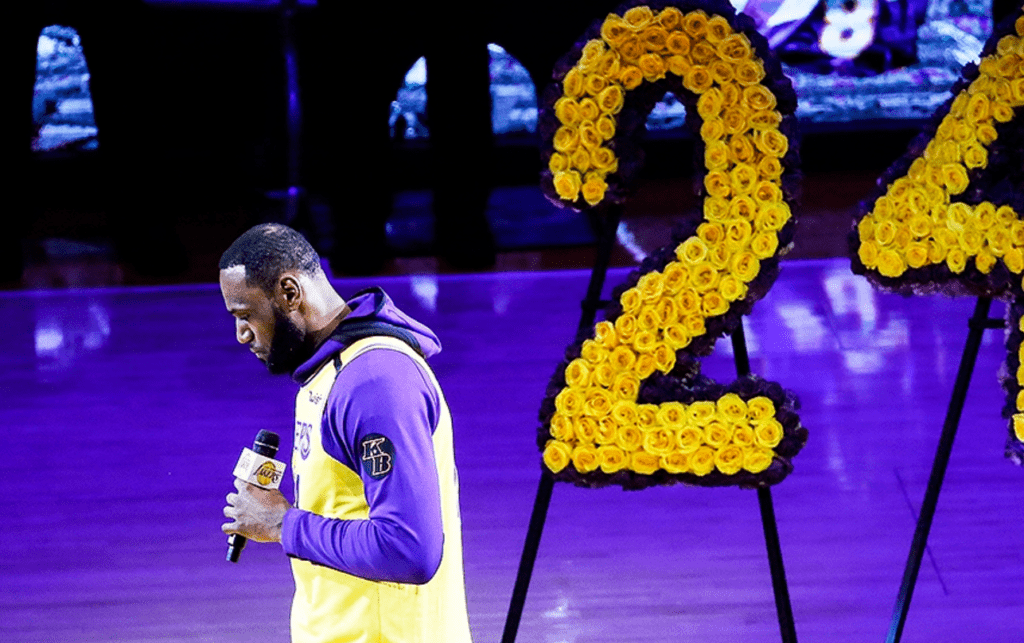
Man, that feeling is incredible humbling and humanizing. Because these guys are superheroes. That NBA Logo is their cape. And they’re just as susceptible to the pain of losing their hero as we are. We still get teary eyed thinking about that helicopter ride on January 26th. So do they. We still get emotional thinking about how much “Ol’ Head” Kobe we missed out on. So do they. We still get emotional thinking about the reign of WNBA Gianna we never got to see. So do they.
And while that’s not a feeling particular to the NBA Bubble, it’s been key to understanding this season. Our jobs and lives all took a pause for Covid… So did the NBA. We all know someone who was painfully impacted by Covid… So was the NBA. We all watched in rage as Black communities went without justice time after time, regardless of protest this summer… So did the NBA. The NBA weathered the 2020 storm with us.
We cried when “Bean” died. So did the NBA.
Mamba on three.
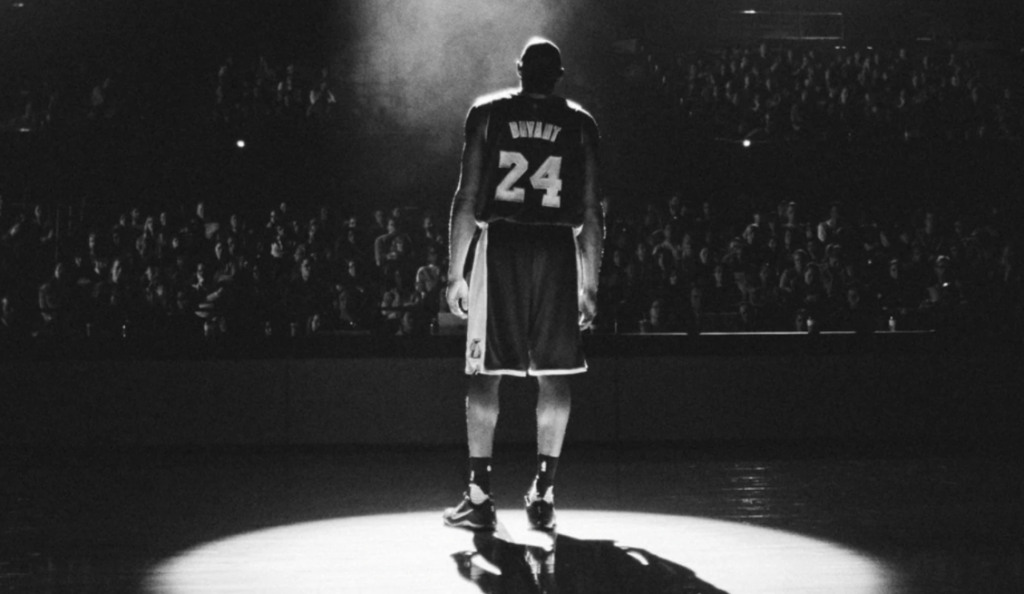
Follow me on Twitter @painsworth512 for more, and give our podcast “F” In Sports a listen wherever you listen to podcasts!






